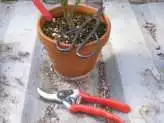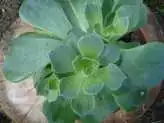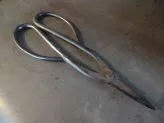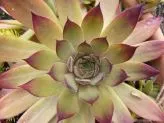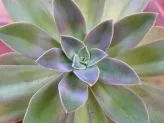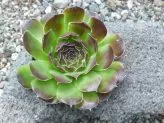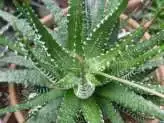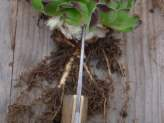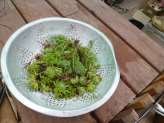Rooting your own Succulents
Succulent plants are easy to propagate; many can be rooted from a single leaf, others will root quickly from a stem cutting. Increase your collection by taking pups from Aloe, Gasteria and some other succulent plants.

Many succulent plants can be grown by seed propagation, either from your own hybridization experiments, or bought from other growers or suppliers.
You can take a leaf from most Echeveria, Sedum and many other succulent plants and use vegetative propagation methods to root it, or ‘behead’ your overgrown Echeveria to get more plantlets.
Succulent plant propagation is almost like magic – but it’s magic that is easy to learn. I’ll bet you won’t be able to stop once you get a taste of it.
Like everything else to do with succulents, the fascination with growing more of them from simply bits that you cut off while pruning them can become more than just a hobby.
I can attest to that, because for many years I sold these plants online, just so I could do more propagation.
I was lucky enough to make this into a full time career by building my very own Sedum and succulent nursery.
You might be interested in finding out more about how I took my passion for growing plants and made it into a lucrative e-business too. It’s easier, and much more fun than I ever imagined.
Seed Propagation
Propagating Succulents from Seed
Some succulent plants will produce viable seed which can be germinated and give you many new hybrids, which are genetic variations of the parent plants.
When your Echeveria or Aloe produce a long flower stalk with little colourful bells on it, you can take a paintbrush and transfer the pollen from one flower to another.
Only two closely related plants will successfully interbreed, so use two different Echeveria or two different Aloe. Other plants that can interbreed easily are Sedum, Sempervivum, Jovibarba species and many more.
It’s only possible to transfer the pollen from flowers that occur at the same time. This is a long term prospect as it can take months for the seed to ripen, and then more time yet to get it to germinate.
I’ve had pots of Echeveria sitting for months, and then finally one day had some tiny baby plants germinate, so patience is the name of the game with this method of succulent plant propagation!
Vegetative Propagation of Succulents
‘Beheading’ Your Echeveria
Sometimes one of your Echeveria will get long and gangly, with a nice rosette sitting up on top of a long woody stem. This calls for beheading!
Simply take the top part of the plant with the nice rosette off, leave it to callous in dry potting soil, and it will root. Don’t discard the long stem though, you can use that for more succulent plant propagation
In time, little plantlets will form, usually at the top of the stem, but sometimes all down it.
Wait until these have at least four to six leaves of their own.
Cut the little plants off with a razor blade, leave them on the top of the soil as usual, and once rooted you can pot them up separately to make more succulent plants to trade. Important tip: let the pieces dry out and callous overnight or even longer before spraying with a small amount of water.
Other types of rosette forming succulent plants benefit from this treatment too.
Stem Cuttings
Sedum and many other succulents also root well from stem cuttings. These are best with a few leaves and some portion of bare stem, or you can gently pull the leaves off to make it easier to push it into the soil.
The soil can be almost anything, but it’s best to have some sand or gravel in it.
Use cactus soil, or other potting soil mixed half and half with sand, or my go-to soil, Sunshine Mix #4 which has a water holding polymer, to make it so much easier to re-wet once it’s dried.
Dibble a hole, and put the cutting (or a bunch of them if they’re small) and then push the soil back into the hole. Water carefully, or leave them dry for a few days (the callousing process works under the dry soil).
See more about succulent soil here.
Propagation by Pups
Some succulent plants can be propagated from pups or offsets such as Agave, Aloe, Gasteria, Haworthia and others.
Simply locate the point of attachment of the pup, and either cut it off with a razor blade, or gently twist to remove it. You can pot these up right away using dry potting soil, and in most cases they will root within a few weeks.
Succulent Leaf Cuttings
To take leaf cuttings from Echeveria and similar rosette forming succulents, simply twist the leaf sideways and pull it off.
Try to get the very base of the leaf stalk, as it may root further up, but will be reluctant to form a bud and new growth.
Place your leaf or leaves on top of the soil in the parent plants pot.
Allow a couple of months to callous and root. You’ll see little pink roots forming and sometimes they go down into the soil by themselves, other times they wave around in the air and don’t have a clue.
At this stage, I usually help them out by putting them in their own pot, making a little depression in the center of the potting soil and then covering the roots.
Try not to bury them too deeply, as sometimes the tiny emerging bud will have trouble getting to the light.
Still got more questions than answers about making more plants? This might answer them! Detailed plant propagation techniques make all the difference.
Purchase the Succulent Plant Propagation E-Book and have instant answers to all your questions, along with my secrets, hints and tips for the best success ever.
For example, find out the answers to these questions:
- What kind of soil is best for my succulents?
- Should I use a rooting hormone for getting them to root faster?
- How much light do they need while rooting?
- Should I water them, or not? What is the best kind of water to use?
- Do you have to take the flowers off before propagating a stem?
- How do you propagate an Echeveria? Do they need special treatment?
- What’s the best time to behead my Echeveria?
- How long does it take to root a new succulent plant from a cutting?
All these questions and many more are answered by a Certified Horticulturist (me) in one easy to find place – in the Succulent Plant Propagation E-Book.
Or, have look at what’s inside in this excerpt.
Caring for Your New Plants
Contrary to your intuition, which will tell you to water, they won’t need it.
Only water once the roots have started to go deeper into the soil, at which time don’t tease it, give it a good drink. Then leave it to dry out almost completely.
I can’t give you a guideline of how long to leave the cutting as every house is different.
If you have dry air – air conditioning or a wood stove – water sooner.
If you have high humidity, then you may not have to water at all.
Use your judgment and above all, have fun with your succulent plant propagation.
You can also check interesting articles on Garden Tools at thetoolboss.com.
So now that you have lots of lovely little plants, what will you do with them? Here are some options;
- Make some succulent crafts like mosaics or spheres.
- Plant a tapestry garden.
- Sell them to other passionate gardeners with your very own succulent plant business.
You might like these

Propagation Tools – Best Tools for Plant Propagation
The Best Tools for Plant Propagation; make your job of growing more plants easier…
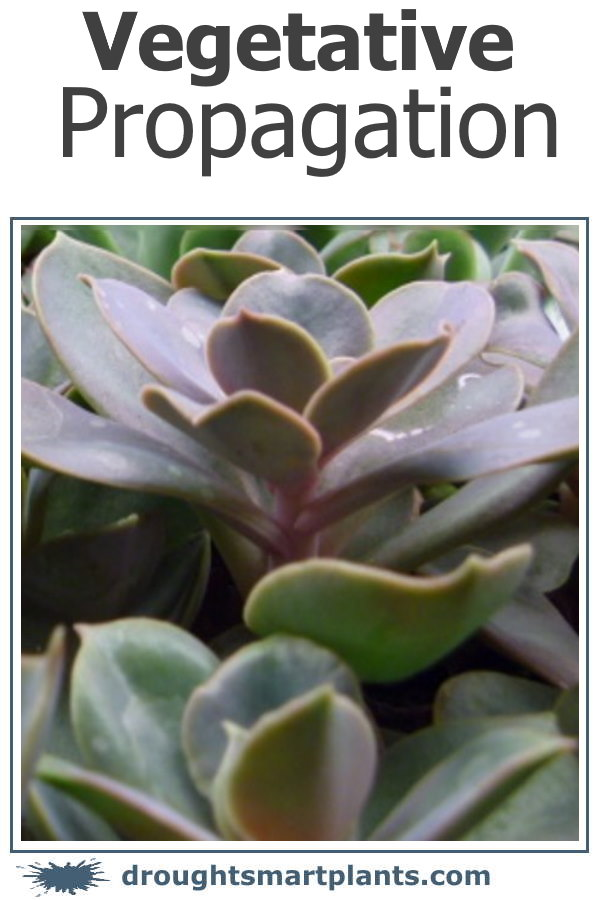
Vegetative Propagation – make more plants with cuttings
Make more plants with Vegetative Propagation; the magic of rooting plants from cuttings; succulent plants can be propagated with a single leaf, or a stem cutting…

Seed Propagation – a seed is a tiny plant, in a box with its lunch
Learning Seed Propagation opens a whole new world for making more plants; unlike taking cuttings, growing succulents from seed is a challenge, and so much fun…




